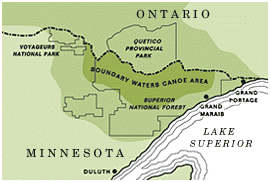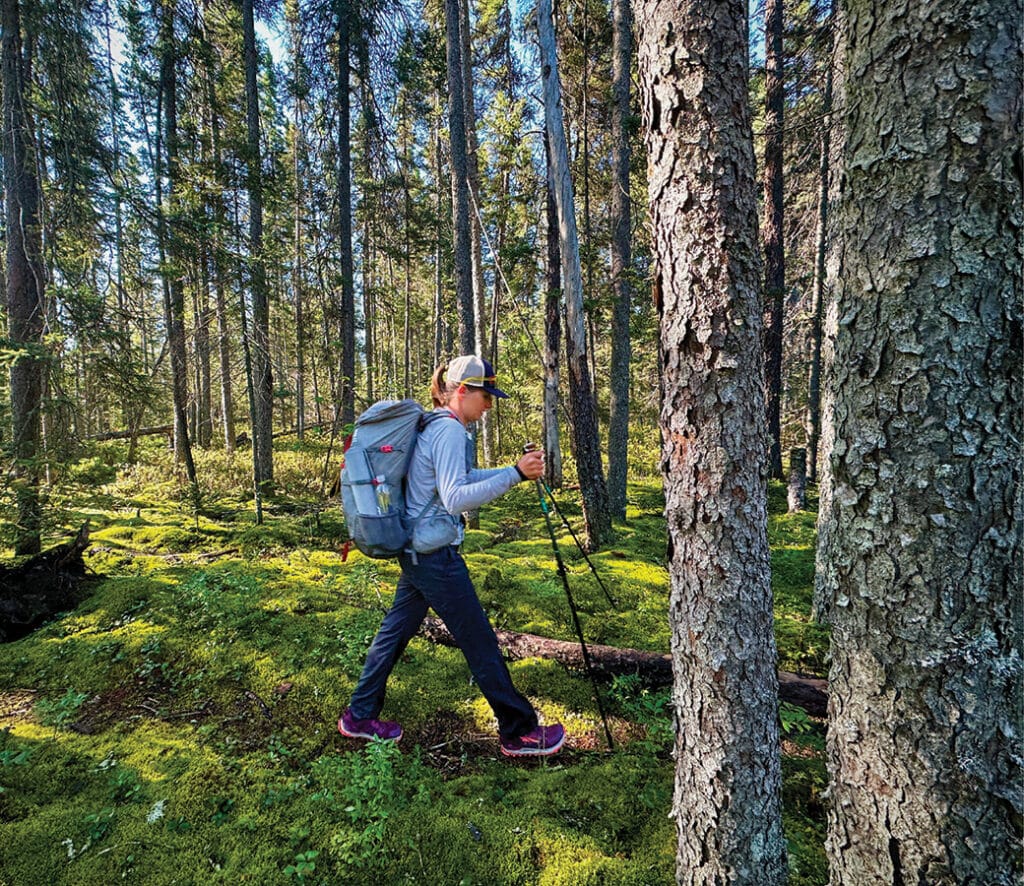
Tucked deep within Minnesota’s Boundary Waters Canoe Area Wilderness (BWCAW), just miles from the Canadian border, the Sioux-Hustler Hiking Trail offers a truly remote experience. This 32-mile loop winds through rugged boreal forest, quiet lakes, and historic logging paths, giving hikers a rare opportunity to experience true solitude. Learn more about our experience as we share tips for planning your adventure.
Located about an hour north of Ely, the trail follows old logging roads and fire tower routes carved by workers in the late 1800s. When Congress passed the Wilderness Act in 1964, logging ceased, and the U.S. Forest Service began converting these roads into hiking trails to support wilderness recreation. The trail takes its name from two prominent features along its route, the Sioux River and Hustler Lake.
Today, the Boundary Waters Advisory Committee (BWAC), in partnership with the USFS-Superior National Forest, maintains the Sioux-Hustler Trail. Volunteers clear brush, organize work trips, and advocate for wilderness preservation. Their dedication keeps this remote trail navigable for those who seek it out.
The exploration begins
We hiked the Sioux-Hustler Trail last summer, drawn by the promise of isolation and adventure. From the small trailhead parking lot along the Echo Trail, the path quickly reminded us how far from civilization we were. Animal tracks outnumbered footprints. Birds and waterfowl filled the air with song, while wolf scat and beaver prints reminded us of the wild company we kept.
We began by following the Sioux River north through mossy lowlands and thick forest. Early on, the trail vanished in a grassy bog, but we quickly found it again. Midday, we rested beside a tumbling cascade of dark granite, its cool mist welcome in the summer heat.
Our first night at Shell Lake brought the stillness we were seeking. Surrounded by white pines, we camped alone. Our companions were the trees, lakes, and breeze. A swim refreshed our trail-worn muscles. Like all BWCAW sites, this one offered only the essentials: a fire grate, log seating, and a backwoods latrine.
The trail forms a lollipop-shaped loop, and hikers can choose their direction. Along the way, we walked through groves of ancient pine, some over 300 years old, still standing after centuries of storms. The trail crossed creeks and beaver dams. Narrow, overgrown stretches often felt more like animal paths. Water was plentiful, and we easily found spots to gather and filter it.
Our second campsite, accessible only to hikers, offered a view of a quiet lake sparkling in the setting sun. We swam, sunned ourselves on granite slabs, and welcomed another hiker who joined us after dinner. In the BWCAW, backpacking campsites are meant to be shared. That night, we swapped stories under the stars.
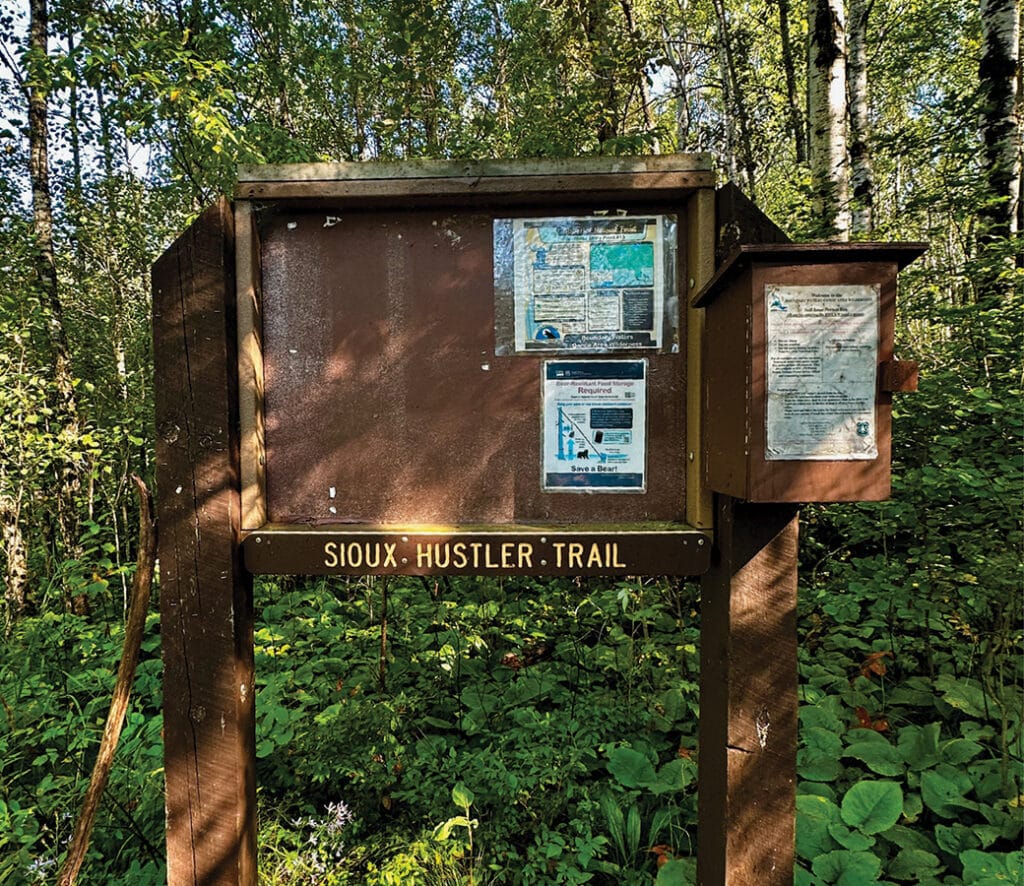
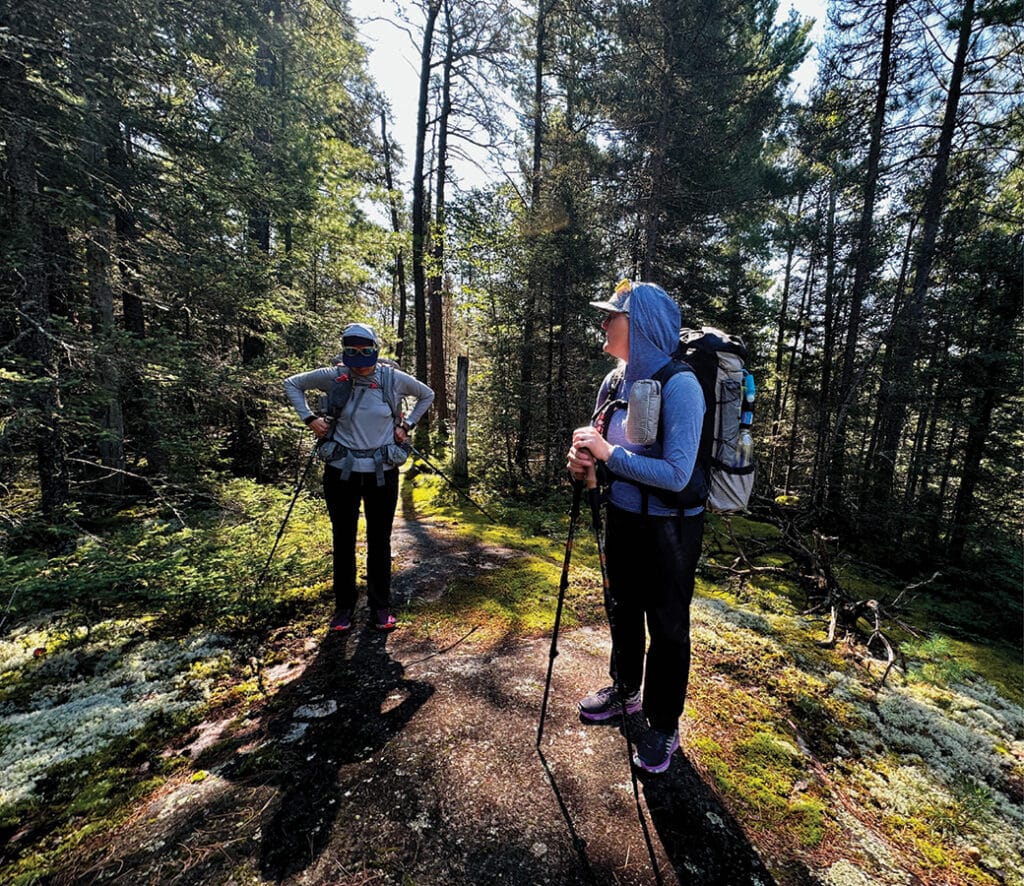
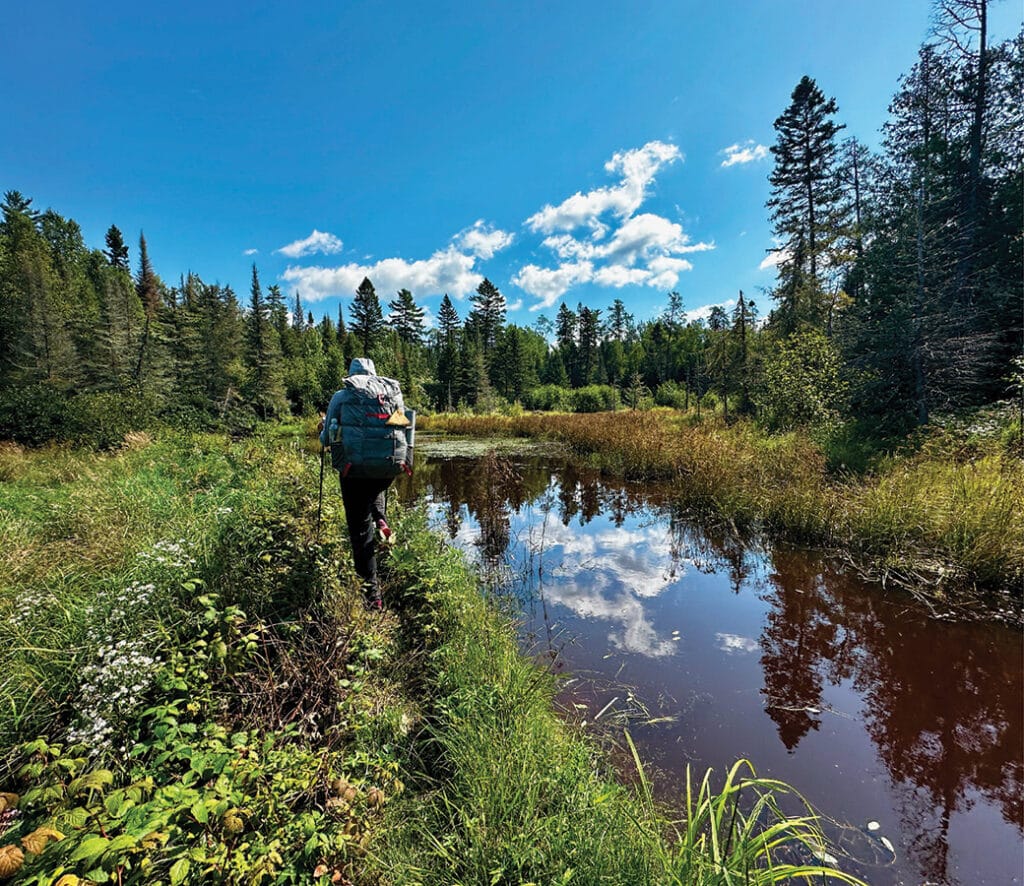
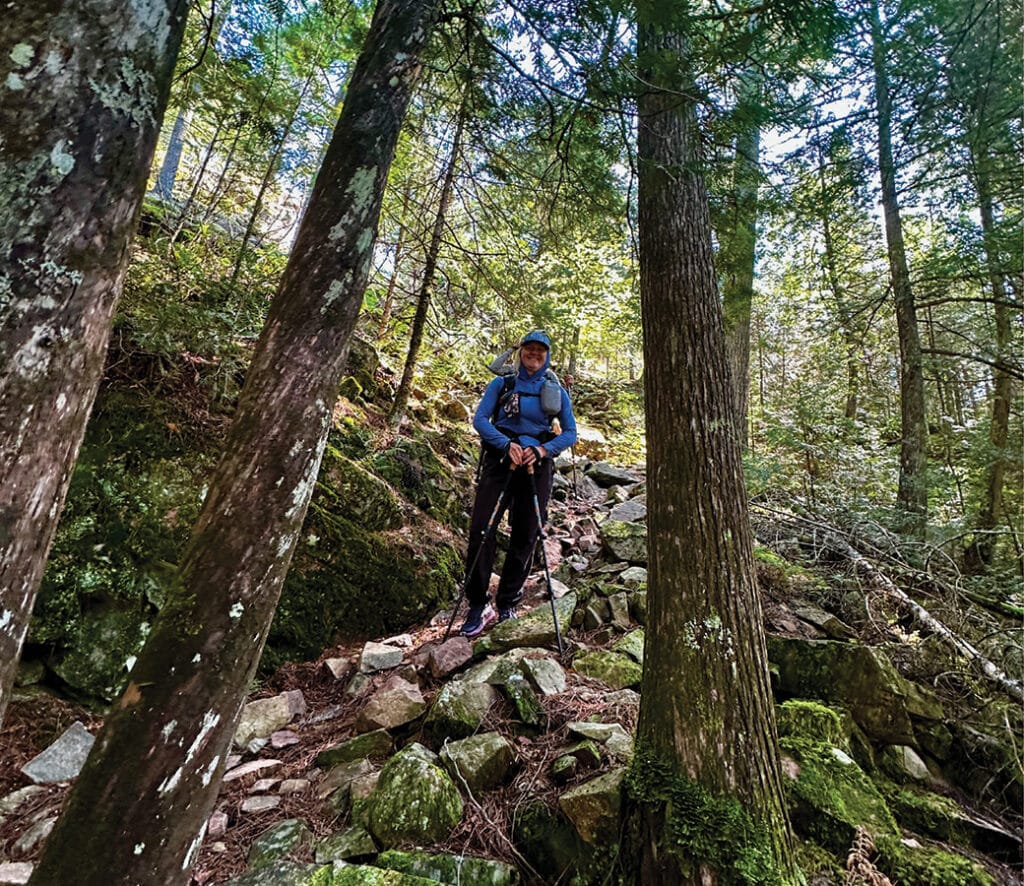
Solitude for miles
The third day led us into the most remote and rugged parts of the trail. We saw one group the entire day. We detoured to Loon Lake via a portage trail and discovered a wide, sandy beach that we’d read about. It was more Caribbean than Canadian Shield.
That night, we camped high above Devil’s Cascade, where water from Lower Pauness Lake crashes down a cataract into the Sioux River system. The rumble of water lulled us to sleep after a campfire and peaceful reflection.
We woke to birdsong and boiled water for tea and oatmeal. After packing up, we filtered water from the river one last time. The final miles brought us back into familiar territory as we retraced our steps down the “lollipop stem.” Additionally, we spent snack time on the tops of granite knobs, where sweeping views of untouched forest and distant lakes unfolded.
Eventually, we spotted the only official trail sign and reached the parking lot, feeling happy yet reluctant for the adventure to end.
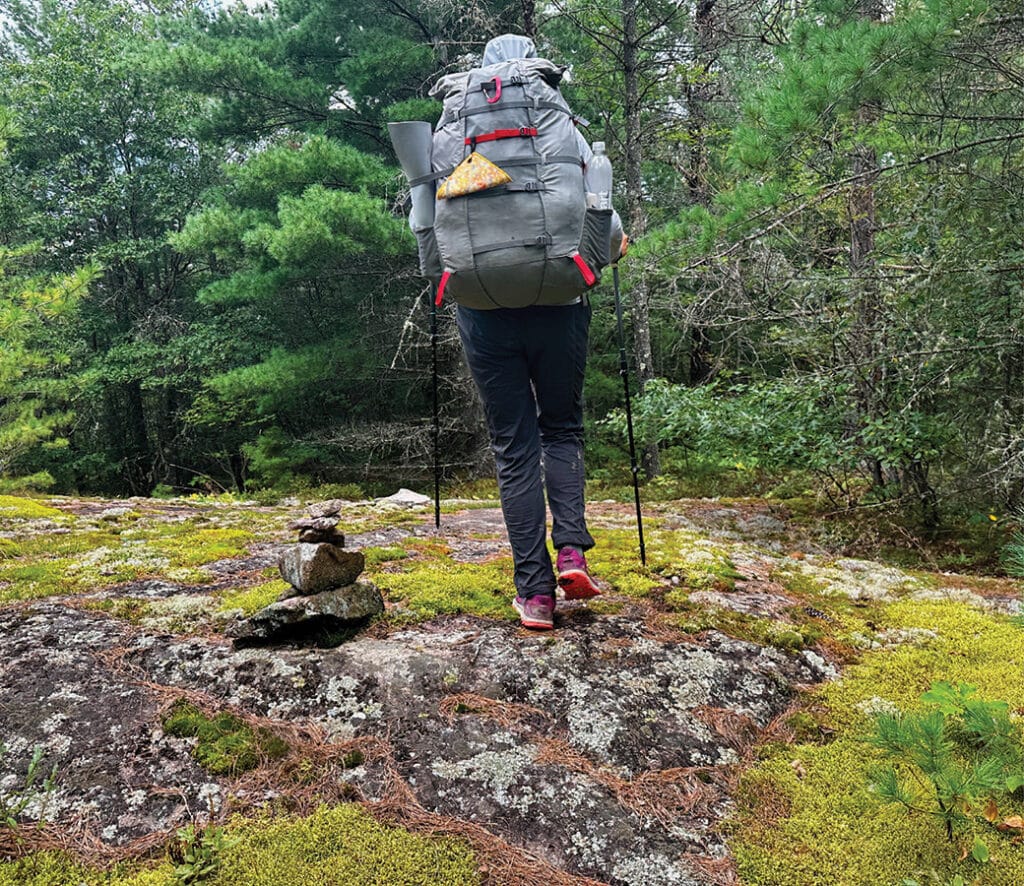
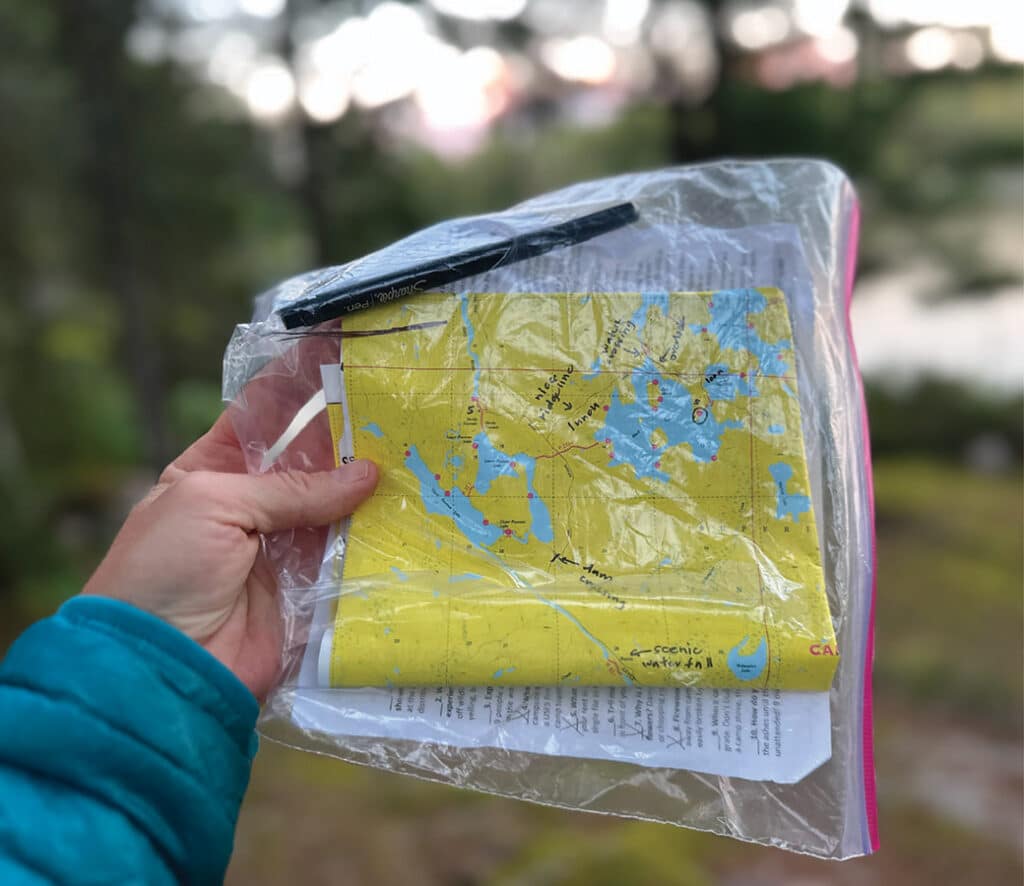
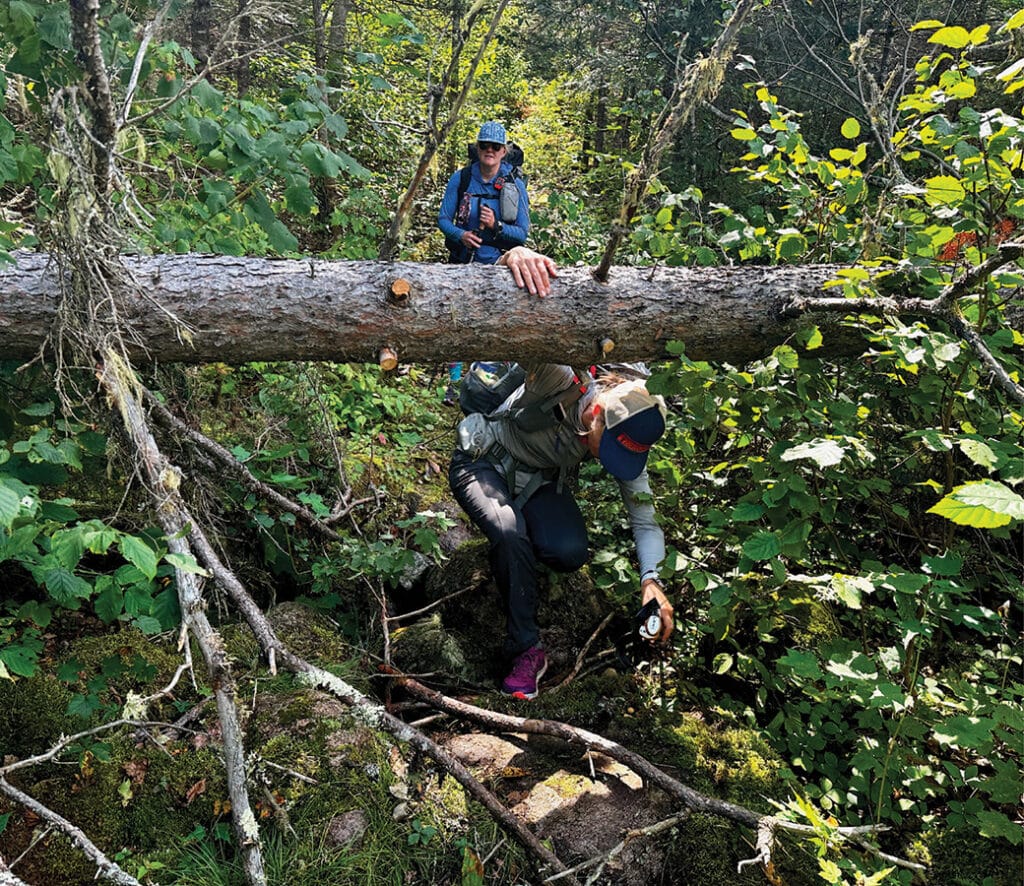
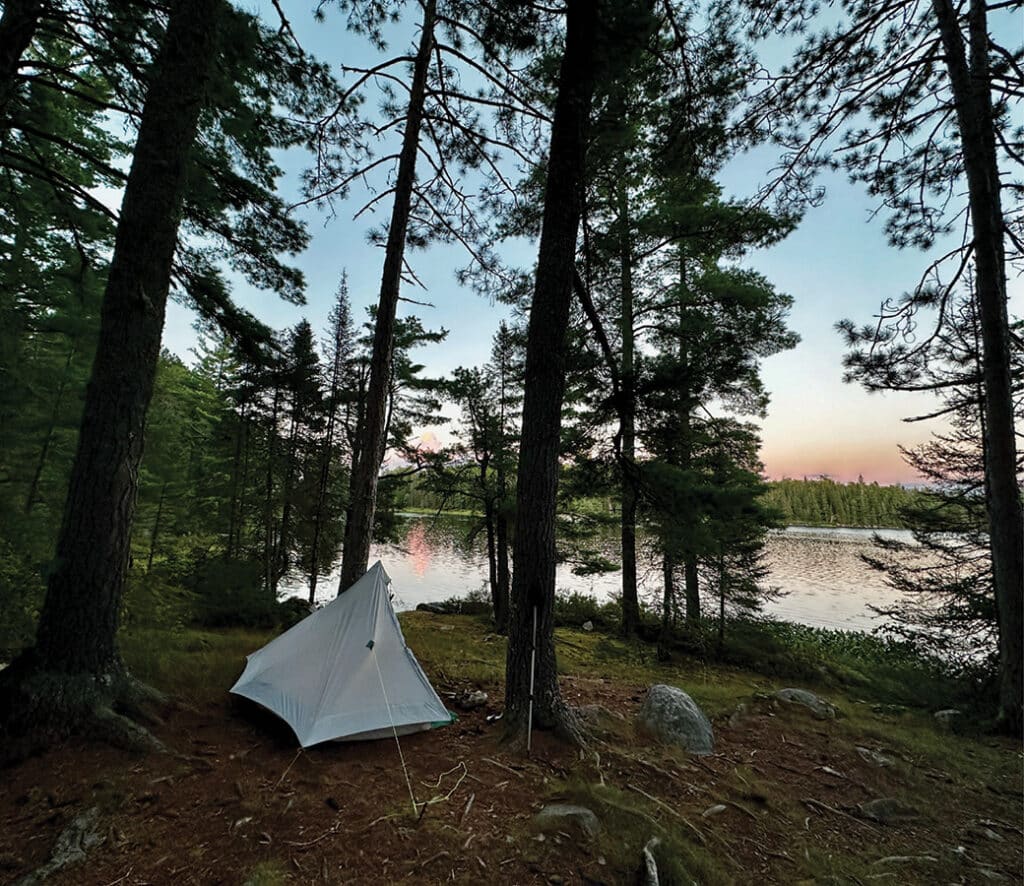
Ongoing stewardship and advocacy
Hiking the Sioux-Hustler Trail offers a deep connection to the wilderness, much different from paddling its lakes. It’s slower, quieter, and more self-reliant. That’s the wonder of it.
Volunteer groups like the Boundary Waters Advisory Committee partner with the Forest Service to conduct annual maintenance and trail-clearing trips. BWAC Vice President Melanie Yackley recalls, “Some of my funnest miles were on the Sioux-Hustler Trail. I often describe it as a long stroll through the woods with some of the more beautiful campsites the BWCAW can offer, while navigating the ever-present beaver re-routes the BWCAW is infamous for.”
BWAC also hosts educational meet-ups in the Twin Cities. Events provide attendees with a chance to pick up a trail guide, connect with other hikers and volunteers, and learn about current trail conditions.
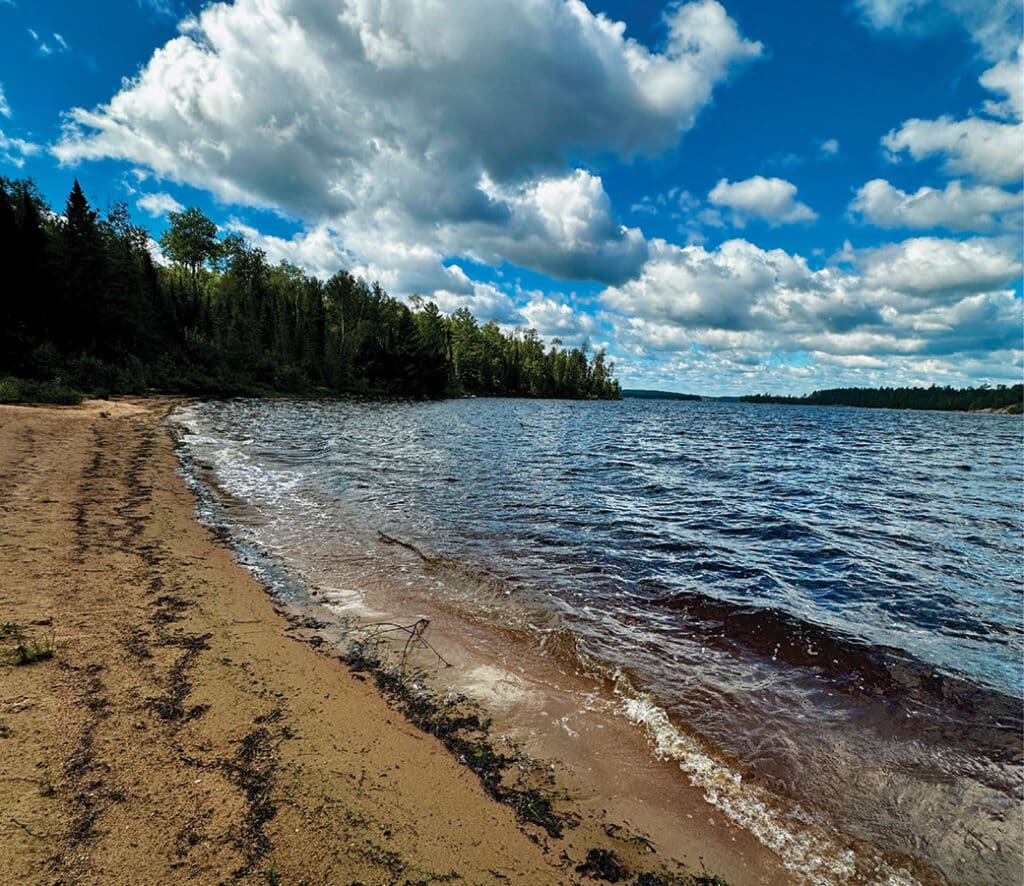
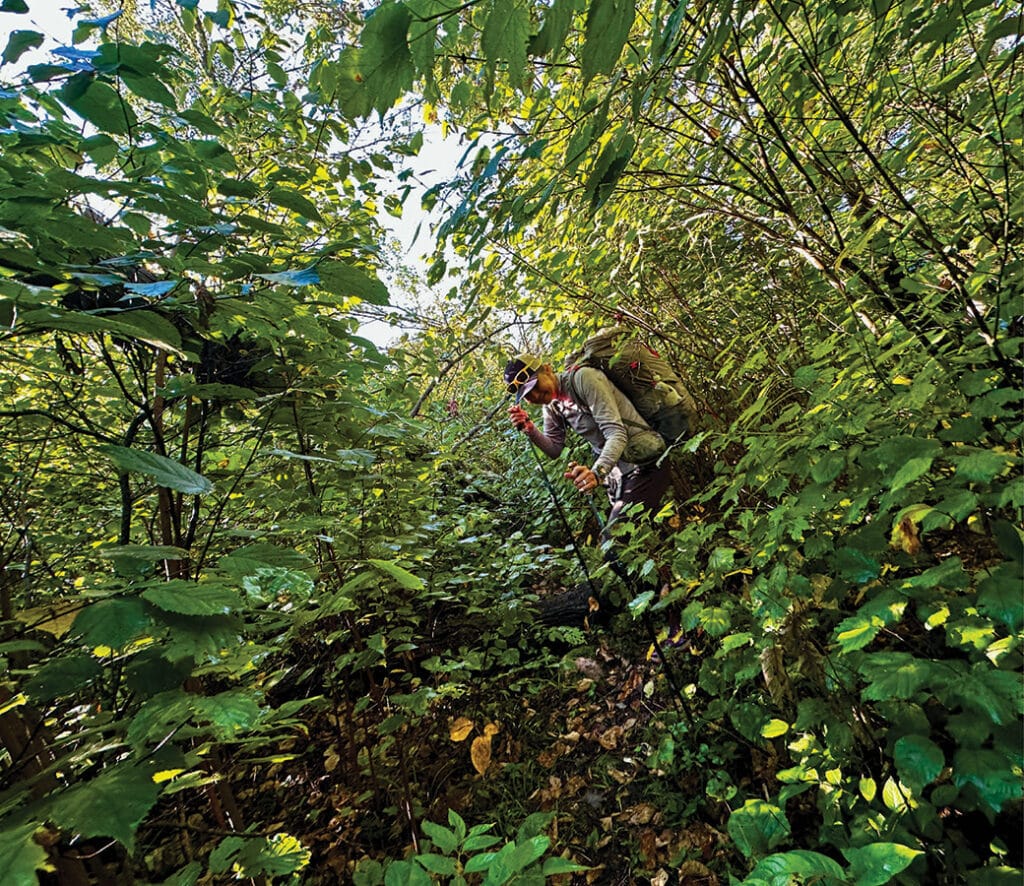
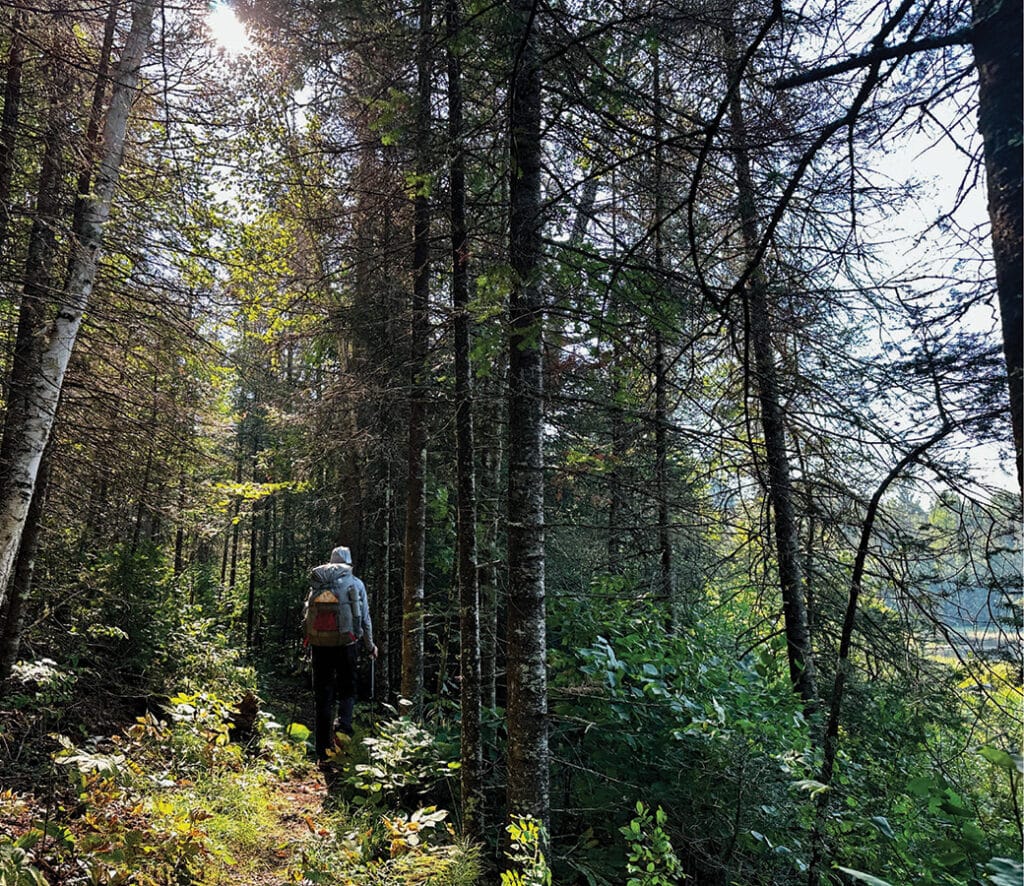
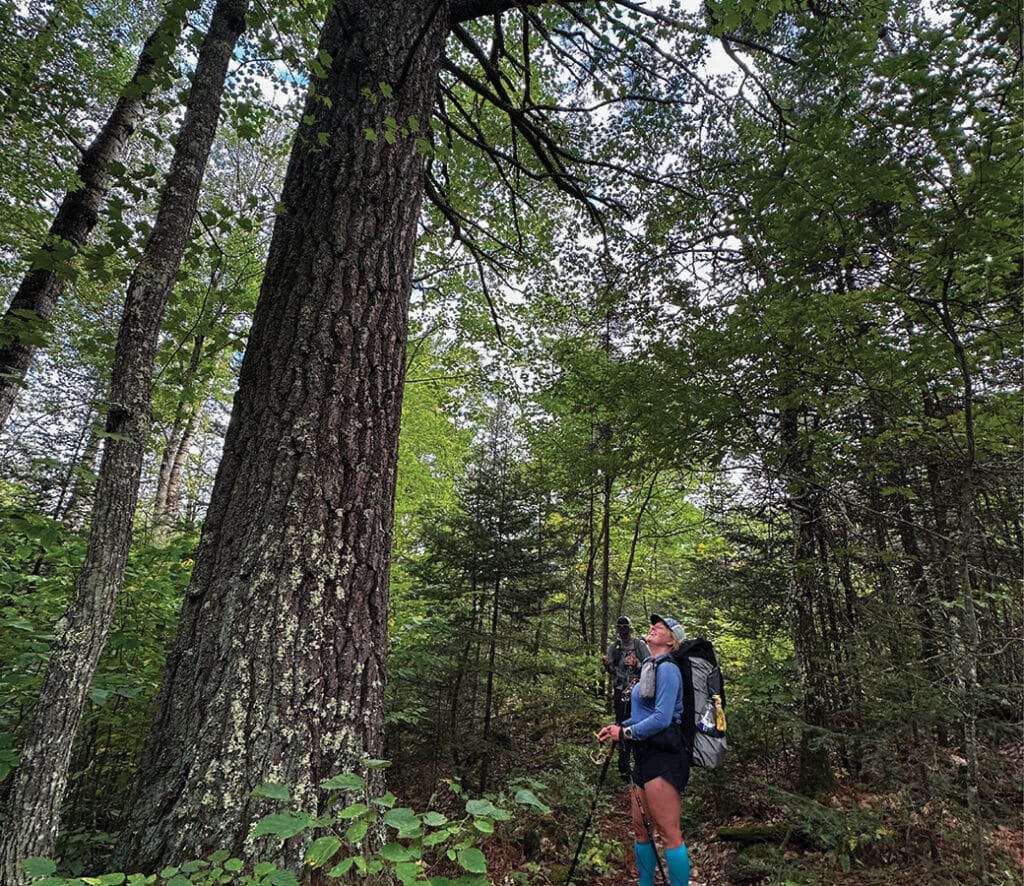
Planning your adventure
The Sioux-Hustler Hiking Trail is open year-round, but preparation is key. Remember, it may take hours or even days for help to reach you. The Forest Service offers a helpful planning guide, but here’s how you can get started.
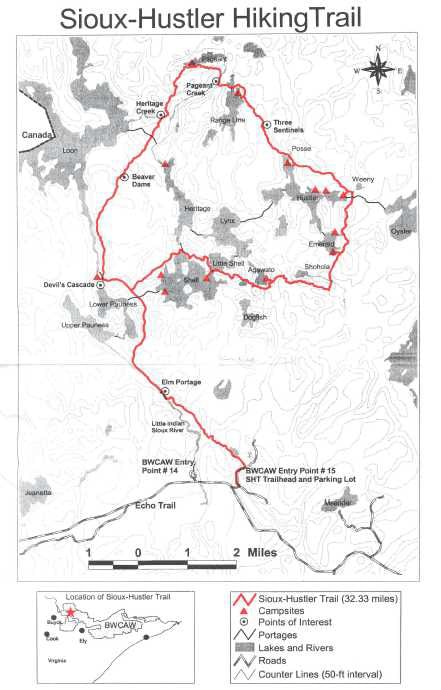
- Contact the Forest Service or local outfitter for current conditions or closures.
- Buy a topographic map online or at a local retailer.
- You will need to obtain a permit for the Sioux-Hustler Trail, Entry Point #15. Reserve one online or pick one up at the trailhead kiosk, ranger station, or outfitter.
- Pack a map and compass and know how to use them.
- Download offline maps from AllTrails or CalTopo.
- Leave an itinerary with your emergency contact and let them know when you plan to exit.
- Carry the 10 Essentials, even for day hikes.
- Use only dead and downed wood for campfires. Keep fires small, within the fire grate, and extinguish them fully.
- Toss dishwater 200 feet away from all shorelines. Don’t use soap, even biodegradable in lakes or streams.
- Pack out all garbage, including menstrual products. Don’t put any garbage in the latrine other than toilet paper.
- Use approved bear containers for food storage, or hang food properly.
- Leave it better than you found it, and keep your voices low as you’re likely to see more wildlife.
Lastly, the Sioux-Hustler Trail is wild, beautiful, and demanding. It asks for your respect and rewards you with solitude, silence, and a deeper connection to nature.
More info:
- Boundary Waters Canoe Area Wilderness Trip Planning Guide – USFS-Superior National Forest
- Sioux Hustler Trail Guide – Boundary Waters Advisory Committee
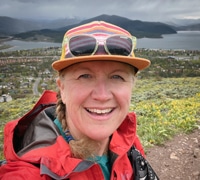
Wilderness guide and outdoorswoman Pam Wright has been exploring wild places since her youth. Remaining curious, she has navigated remote lakes in Canada by canoe, backpacked some of the highest mountains in the Sierra Nevada, and completed a thru-hike of the Superior Hiking Trail. Her professional roles include working as a wilderness guide in northern Minnesota and providing online education for outdoor enthusiasts.

